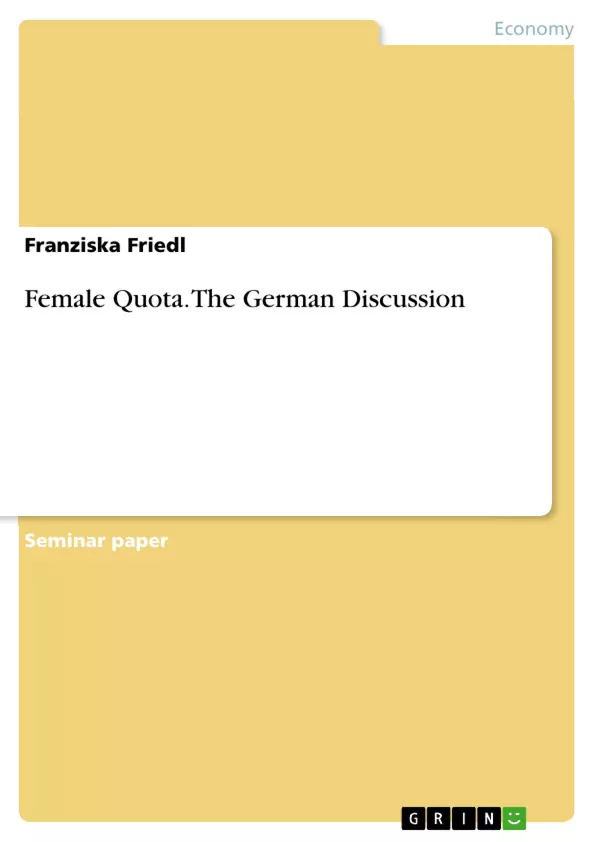This essay deals with the question of why the female quota as a legal measure to promote equality is still so controversial after the introduction of the law.
The general discussion on occupational gender equality has increasingly shifted in recent years to the equality of women in management positions. After many years of resistance despite growing political pressure, the entry into force of the Law on Equal Participation of Women and Men in Leadership positions in the Private and Public Sector on 1 May 2015 created a key element of equality. But the legal quota is still controversial. It has become a focal point for the question of how to replace legal regulations for enforcing professional equality through voluntary agreements and voluntary commitments.
Inhaltsverzeichnis (Table of Contents)
- Introduction
- Female Quota – A blessing or curse?
- Definition.
- The historic milestone.
- Reasons of the underrepresentation.
- Central theme of politics.
- Germany in European Comparison - Top or Flop?
- Status Quo.
- European overview.
- The Norwegian model - A possibility for Germany?
- Conclusion
Zielsetzung und Themenschwerpunkte (Objectives and Key Themes)
This seminar paper examines the ongoing debate surrounding the female quota in Germany and its effectiveness as a legal measure to promote gender equality in leadership positions. It explores the historical context of the quota, the reasons behind the underrepresentation of women in management roles, and the arguments for and against its implementation. Additionally, the paper compares Germany's approach to the female quota with European trends and analyzes the Norwegian model as a potential alternative.
- Definition and historical context of the female quota
- Causes of the underrepresentation of women in leadership positions
- Political and economic perspectives on the female quota
- Comparison of Germany's approach to the female quota with other European countries
- The Norwegian model as a possible solution for Germany
Zusammenfassung der Kapitel (Chapter Summaries)
The introduction establishes the context of the female quota debate and highlights the significance of its implementation as a key element of gender equality in leadership positions. It also outlines the paper's objectives and structure.
Chapter 2 explores the definition and historical context of the female quota, tracing its development and highlighting the ongoing challenges of gender inequality in management positions. It delves into the reasons behind the underrepresentation of women, analyzing the underlying societal and structural barriers. The chapter further examines the central themes and debates surrounding the quota in the political sphere.
Chapter 3 focuses on the female quota in Germany, providing a comparison with the situation in other European countries. It examines the current status quo and highlights the diverse approaches taken by different nations. The chapter concludes by analyzing the Norwegian model as a potential alternative for Germany, examining its strengths and weaknesses.
Schlüsselwörter (Keywords)
The key terms and concepts explored in this paper include: female quota, gender equality, leadership positions, underrepresentation of women, political and economic perspectives, European comparison, Norwegian model, legal regulation, voluntary agreements, gender stereotypes, corporate culture.
- Quote paper
- Franziska Friedl (Author), 2019, Female Quota. The German Discussion, Munich, GRIN Verlag, https://www.grin.com/document/473791



